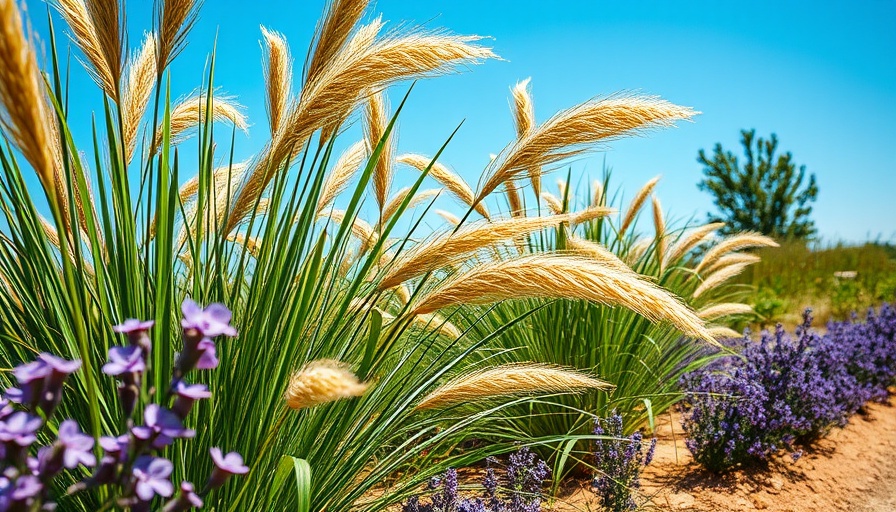
Why Ornamental Grasses are Essential for Hot, Dry Climates
If you're dealing with the challenges of landscaping in a hot and dry climate, ornamental grasses may be your best ally. These resilient plants require minimal care and thrive on limited water, making them perfect for homeowners striving for low-maintenance gardens. Not only do they offer aesthetic value, but they also contribute to sustainability by preventing soil erosion, improving air quality, and supporting local wildlife.
Discover 9 Ornamental Grasses for Your Landscape
Here’s a curated list of some top picks that will bring beauty and functionality to your hot, dry garden:
- Blue Grama Grass - Bouteloua gracilis: Known for its fine, blue-green foliage, this grass adds a lovely natural charm to landscapes needing little water.
- Mexican Feather Grass - Stipa tenuissima: Offering elegant, feathery spikes, it's great for coastal gardens and looks stunning when backlit by the sun.
- Switchgrass - Panicum virgatum: Adaptable and versatile, switchgrass is effective for erosion control and is a great habitat for birds.
- Little Bluestem - Schizachyrium scoparium: A native prairie grass, it flourishes in dry conditions and exhibits stunning color changes through the seasons.
- Indian Grass - Sorghastrum nutans: This tall ornamental grass tolerates poor soil and drought, making it a robust choice for low-water regions.
- Blue Oat Grass - Helictotrichon sempervirens: With its striking blue hue, this grass thrives in full sun and adds unique texture to garden beds.
- Fountain Grass - Pennisetum alopecuroides: Its fluffy flower spikes sway gracefully in the wind, providing movement in any landscaping design.
- Giant Feather Grass - Stipa gigantea: This towering grass can reach impressive heights and creates a dramatic focal point in gardens.
- Prairie Switchgrass - Panicum virgatum: Perfect for creating natural-looking borders, its height and stability contribute to garden privacy.
Practical Tips for Incorporating Ornamental Grasses
When designing your garden, consider the following tips:
- Layering: Combine taller grasses like Indian Grass for backdrop coverage with smaller ground covers like Blue Grama for an appealing visual flow.
- Multi-Season Interest: Choose grasses that provide attributes across seasons; for instance, Little Bluestem turns a vibrant reddish-orange in fall.
- Wildlife Gardens: Select grasses that provide habitat and food sources for local birds and insects, thereby enhancing the ecological value of your yard.
Common Misconceptions About Ornamental Grasses
Many homeowners hesitate to use ornamental grasses, believing they require excessive maintenance or are susceptible to pests. However, most ornamental grasses are incredibly hardy and resistant to pests, requiring only seasonal trimming to flourish.
How to Get Started with Your Planting Projects in Muskegon
As you plan your backyard, think about starting a planting box or constructing outdoor soil beds. Use techniques like building elevated planter boxes to create a microclimate that encourages grass growth. You can even design a backyard utility house to store your gardening tools easily!
A Call to Action: Transform Your Outdoor Space!
Ready to elevate your garden? Whether you’re interested in an ornamental grass makeover or need help with lawn care and winter plowing, your search ends with (Norther-LawnCare.com). Call Everett Lucas at 231-450-3414 to get started!
 Add Row
Add Row 
 Add
Add 


Write A Comment